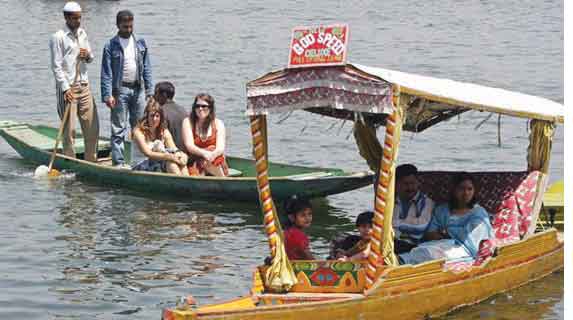NVI Correspondent
Srinagar, Dec 31(NVI): Jammu and Kashmir marked 2024 as a milestone year for its tourism industry, welcoming an unprecedented 3 million visitors.
This figure reflects a 10% increase compared to 2023, highlighting the region’s growing popularity among both domestic and international travelers. The surge in tourist numbers has been attributed to targeted government initiatives, improved infrastructure, enhanced connectivity, and a renewed focus on promoting the region’s diverse attractions.
Speaking to NVI, Director of Tourism Raja Yaqoob expressed optimism about the sector’s growth. “This milestone is a testament to Jammu and Kashmir’s unmatched beauty, cultural richness and adventure offerings. It also showcases the success of our efforts to create a safe and welcoming environment for tourists,” he said.
The year also witnessed a notable rise in foreign tourist arrivals, signaling Jammu and Kashmir’s growing global appeal. International travelers were drawn to the region’s picturesque valleys, serene lakes, and snow-covered peaks, alongside its vibrant festivals and unique handicrafts. The increased international interest reflects the government’s ongoing efforts to position Jammu and Kashmir as a premier destination on the global travel map.
Traditional hotspots such as Srinagar’s Dal Lake, the breathtaking landscapes of Gulmarg, and the lush meadows of Pahalgam continued to dominate itineraries. The Vaishno Devi Shrine, a key religious destination, drew millions of pilgrims throughout the year, further boosting tourism in the Jammu region.
Adventure enthusiasts flocked to the region for activities like trekking, rafting, and skiing. Gulmarg, hailed as one of the best ski destinations in Asia, recorded high footfall during the winter season. Additionally, cultural festivals, including Tulip and Saffron festivals, provided a platform to showcase the region’s natural and cultural wealth, drawing in tourists throughout the year.
The tourism boom has brought a significant boost to the region’s economy, benefiting local businesses, including hoteliers, houseboat owners, artisans, and guides. Several rural communities, previously disconnected from mainstream tourism, have also been included through new initiatives aimed at promoting homestays and village tourism.
Local shopkeepers and craftsmen, known for their exquisite Pashmina shawls, papier-mâché products, and walnut wood carvings, reported higher sales, as visitors showed a growing interest in authentic Kashmiri souvenirs.
The government’s efforts to enhance air, rail, and road connectivity have played a crucial role in boosting tourist arrivals. The completion of major infrastructure projects, such as upgraded highways and direct flights to Srinagar from key cities, has made Jammu and Kashmir more accessible than ever. Additionally, promotional campaigns and partnerships with leading travel agencies have showcased the region’s allure to a wider audience.
Looking ahead, the government plans to focus on sustainable tourism to ensure the preservation of Jammu and Kashmir’s pristine environment while continuing to uplift local communities. “We aim to not only increase the number of tourists but also enhance their experience while preserving our natural and cultural heritage,” said Yaqoob.
With the positive trends seen in 2024, Jammu and Kashmir is poised to build on this momentum in the coming year. Plans to introduce new tourist circuits, develop eco-tourism projects, and host large-scale events are already underway. As the region continues to balance development with sustainability, it is set to solidify its position as one of the world’s most sought-after destinations.
This resurgence in tourism underscores Jammu and Kashmir’s enduring charm, resilience, and the promise of an even brighter future in 2025 (News Vibes of India)








